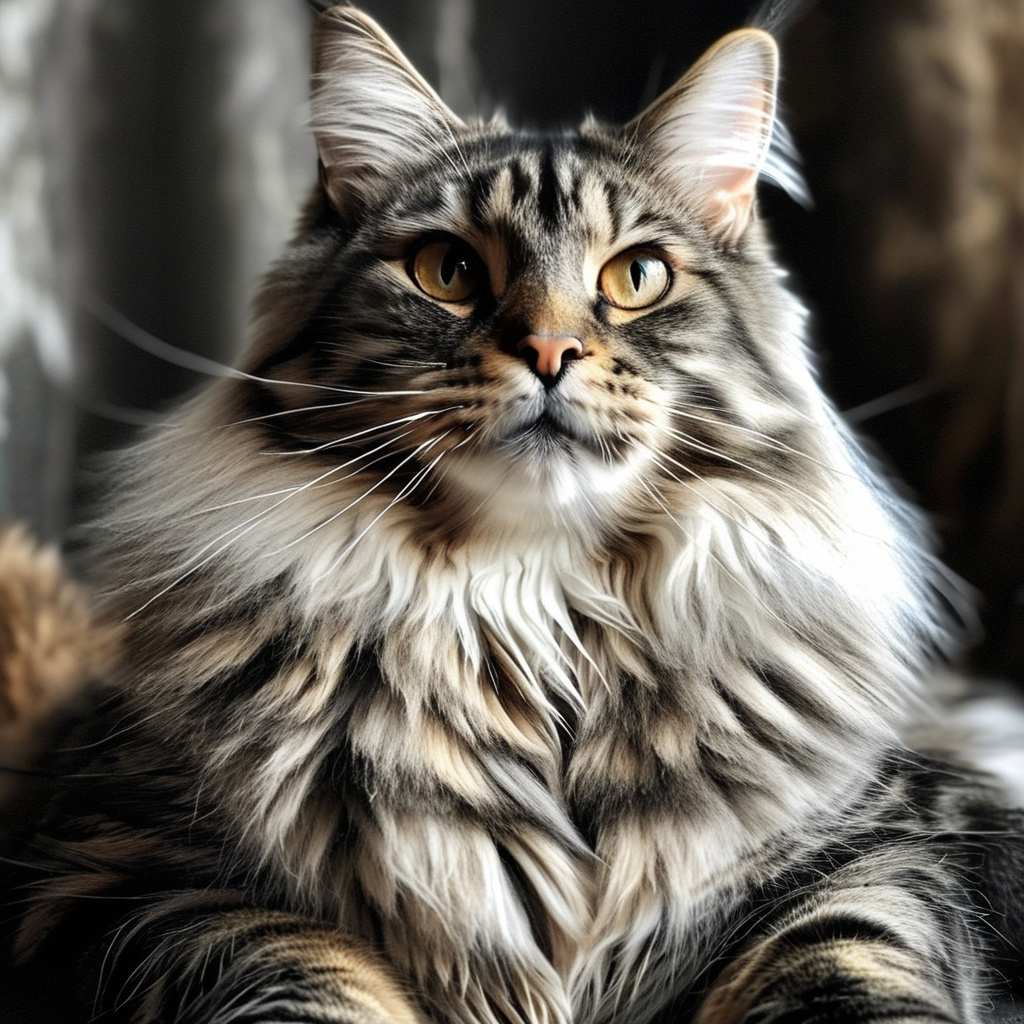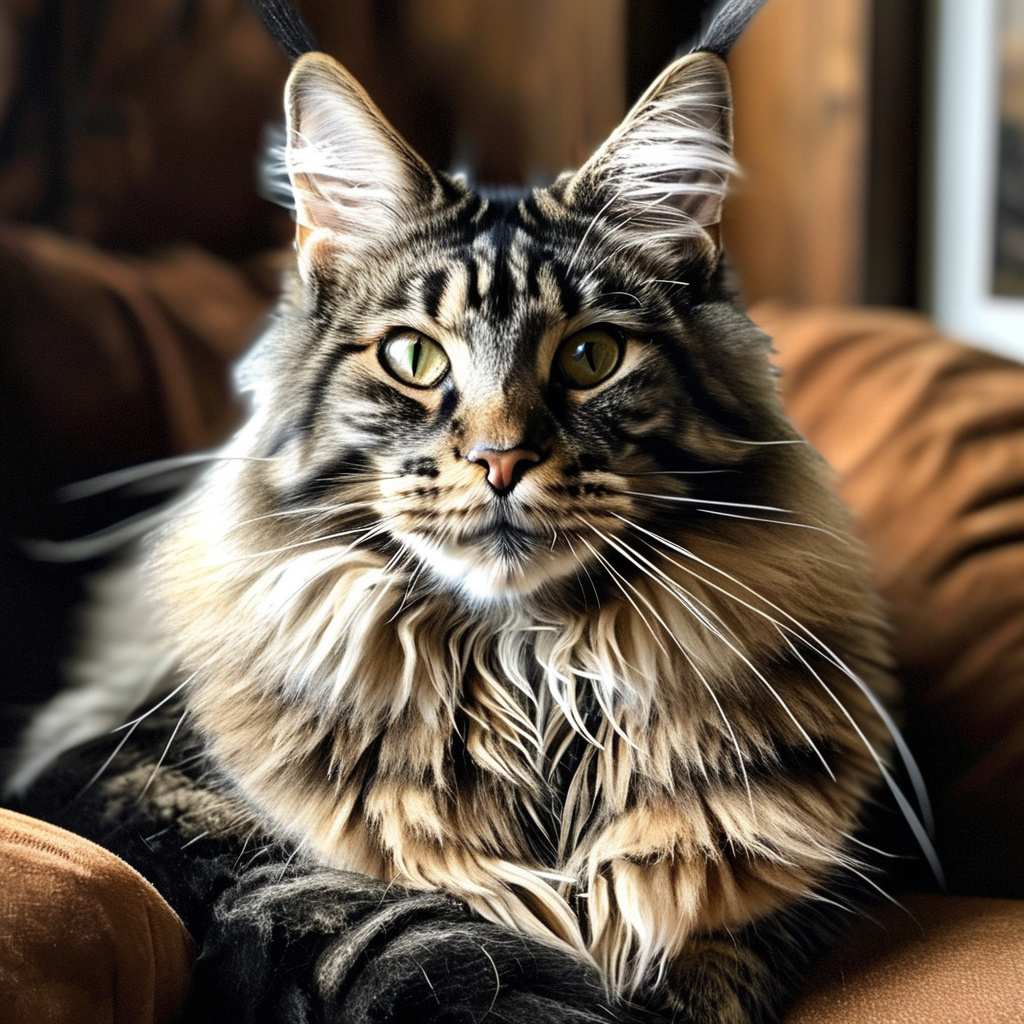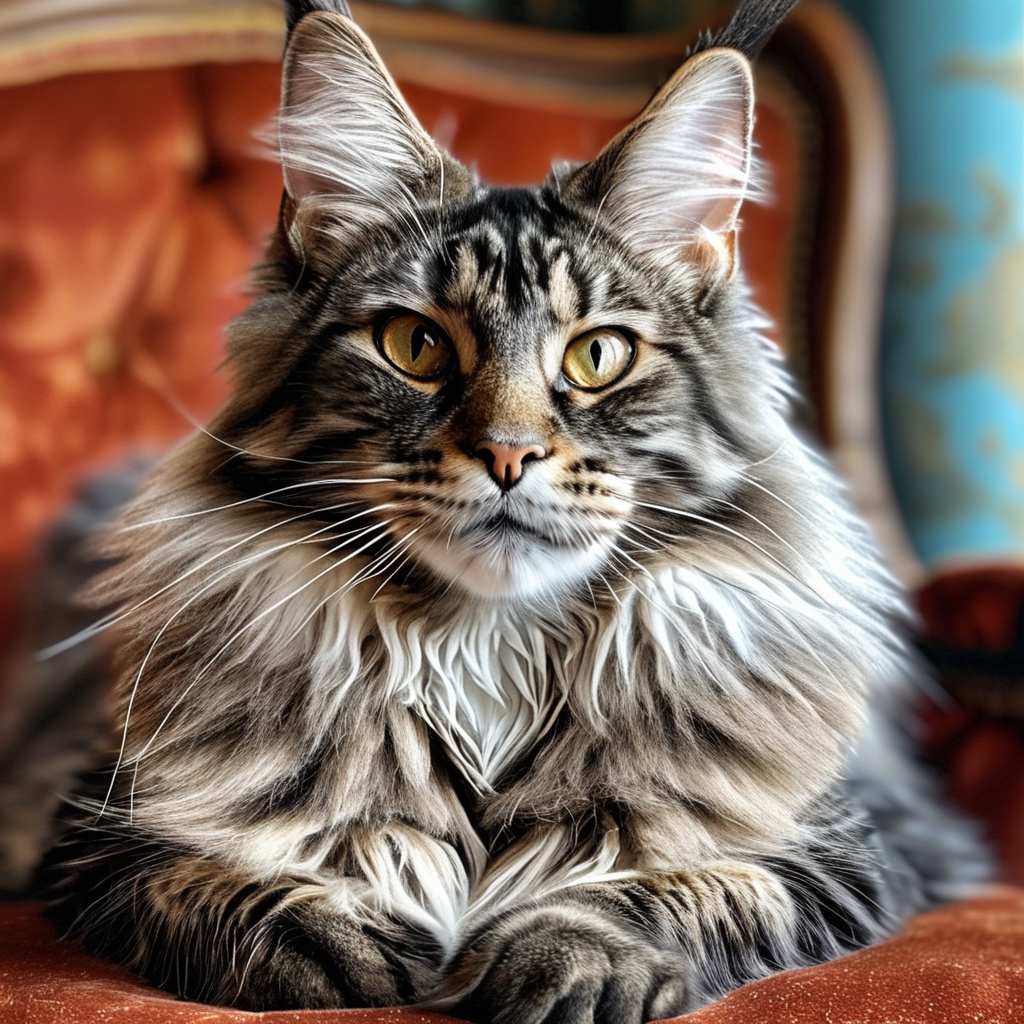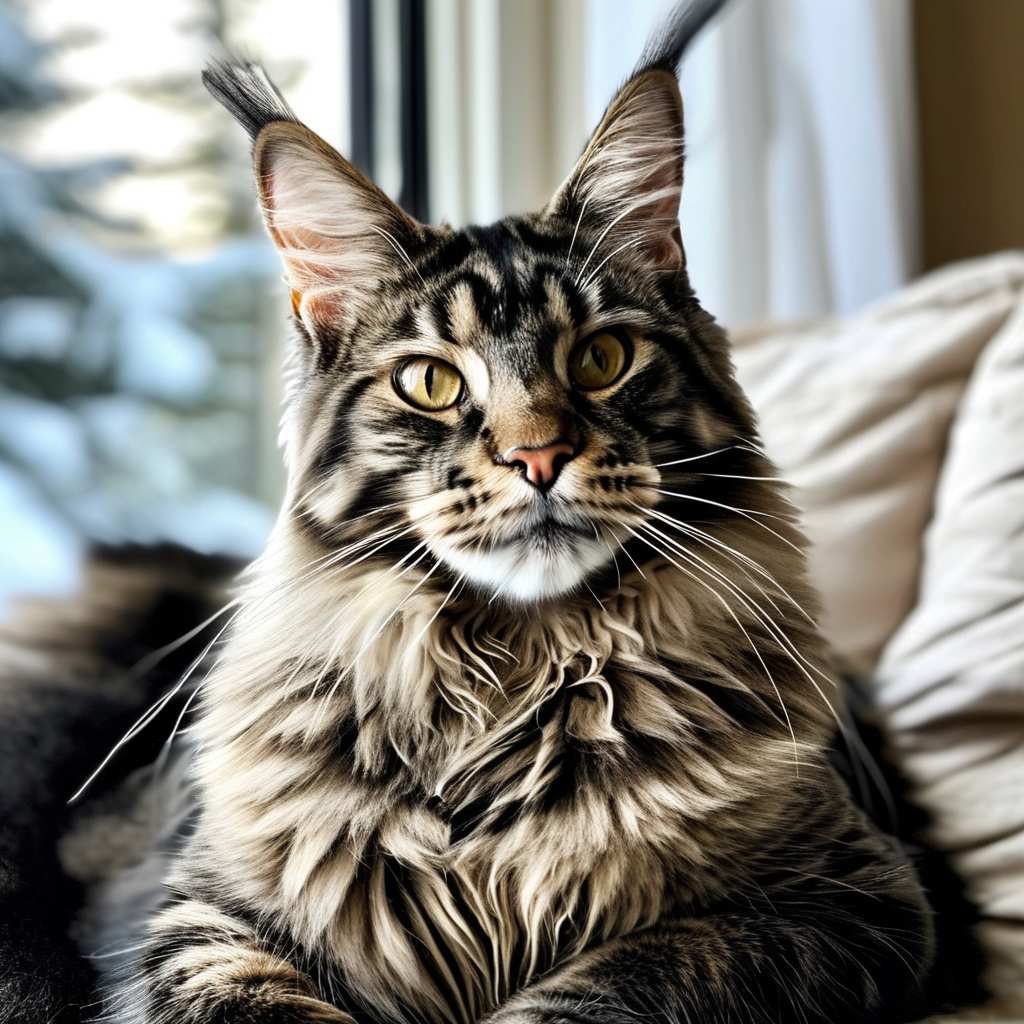
Introduction
The Maine Coon, often recognized as Canada’s national breed and one of the largest domestic cats, boasts a captivating history filled with myths and theories. Whether their lineage stems from Norwegian Forest Cats or seafaring adventures, one thing remains certain: these magnificent felines trace their roots back to North America. Known for their bulky frames, long coats, and distinctive “M” marking on their foreheads, Maine Coons are a blend of strength, charm, and resilience. As both playful companions and affectionate family members, their care demands attention to grooming, diet, and health monitoring. Despite their imposing size, they possess a dog-like personality that endears them to many.
Related Post: Everything You Need to Know About the Lively and Lovable Miniature Schnauzer
National breed of Canada and one of the earliest known and largest domestic cats – Maine Coon. There are many legends about the origin of this breed, but one thing is certain – it all started in North America.
One theory is that these cats are the result of a cross between the local wild cats and the Angorians or Persians that Captain Coon brought on ships. The second theory is that Maine Coons are descended from Norwegian Forest Cats. And the oldest legend is that Maine domestic cats crossed with raccoons (popularly known as coons). This is where the name of the breed comes from. Today, we know that from a biological point of view, such a gene transfer is not and has never been possible.
 These semi-longhaired cats belong to the oriental type. The climate in which they lived has strongly influenced them. The harsh winters, the high layers of snow and the semi-wild areas eliminated the weakest and sickest individuals so that new generations were strong and resistant.
These semi-longhaired cats belong to the oriental type. The climate in which they lived has strongly influenced them. The harsh winters, the high layers of snow and the semi-wild areas eliminated the weakest and sickest individuals so that new generations were strong and resistant.
Related Post: The Energetic and Stubborn Yorkshire Terrier: A Complete Guide
Maine Coon Silhouette
Maine Coons are very large, bulky cats. Their coat adds to their stature. The body weight of an adult male can vary from 4.8 kg to 11 kg and that of a female from 3.5 to 8 kg. The length of the body and tail reaches 1 meter.
The head is medium-sized, broad and square. Together with the large, slightly angled ear tufts, it forms a large but unified whole with the large body. The eyes of these cats are oblique and oval. Green, gold or copper colour. The vibrissae are very long, one of the longest in domestic cats – the record holder had vibrissae 16.5 cm long! The skull and muzzle of the Maine Coon should be two separate parts. The muzzle of the Maine Coon itself is very distinct, and the vibrissae are very pronounced, large, and convex. Interestingly, the letter M is visible on the forehead. The chest is broad; the torso is muscular and massive. The legs are medium long with large round feet. The areas between the fingertips are very hairy. The tail is long and very fluffy.
The coat of the Maine Coon is thick, silky and loose. It is longer on the neck, belly and thighs, where it forms a ruff and trousers. All coat types are recognized by the cat organizations, but the most popular is brown – the tabby type.
This body structure helped the breed survive in difficult climatic conditions. Broad paws provided a strong grip, making it easier for the cats to move in the snow. The furry tail, which forms a seemingly fan-shaped pattern, provided balance and covered and warmed the Maine Coon’s body on cold nights.
Related Post: The Power of Cuddling: Building Bonds Between Humans and Animals
 Maine Coon Care and Grooming
Maine Coon Care and Grooming
Maine Coons have all three types of hair – topcoat, undercoat, and guard hair. This structure makes the coat prone to tangles and requires regular combing, preferably every few days. It is worth getting your cat used to grooming at an early age and rewarding your cat with treats or affection after each grooming session. The best way to comb your cat is with a metal comb with long, closely spaced teeth. This will allow you to reach the hairline and comb the hair from the skin as well as the top. During periods of increased hair loss, it is recommended to comb out excess undercoat and dead hairs with a trimmer or cardboard comb. The combing itself should be done in a pleasant atmosphere, without struggle or force. Special attention should be paid to the following areas: under the armpits, in the groin, at the base of the tail and behind the ears, where the coat tends to tangle. You should spend more time combing the tail – the hair grows back more slowly there, and any tufts that are pulled out or damaged can leave the coat bare or thinner for a long time.
Cats of this breed have a waterproof coat, so bathing them is very difficult. Unless specifically advised by your veterinarian, or unless your cat has become severely soiled with a substance it should not eat, such attempts should not be made. If necessary, dry shampoo can be used, which is a much less stressful method for both parties.
The long and thick coat contributes to the increased formation of pilobezoars, which are undigested, broken-off hairballs that occur when Maine Coons are washed daily. With proper nutrition and a well-functioning digestive system, your cat will be better able to handle its waste. So it’s worth making sure they’re getting the right diet – a meaty wet food and the addition of offal and animal fats will definitely strengthen the digestive system and regulate the elimination of hairballs.
 Good nutrition also makes it easier to control your pet’s weight. Every extra pound puts a strain on a Maine Coon’s bones and joints, so uncontrolled weight gain should be avoided.
Good nutrition also makes it easier to control your pet’s weight. Every extra pound puts a strain on a Maine Coon’s bones and joints, so uncontrolled weight gain should be avoided.
Related Post: Essential Tips for Creating a Happy and Healthy Home for Your Hamster
If you are considering buying a Maine Coon cat, you should consider the cost of living. There is no denying that Maine Coons, as one of the largest cat breeds, eat a lot. The food should be good quality, with meat – this will help your cat feel fuller faster, but still more food will be eaten each day than with smaller cats. You should also remember to have your cat’s heart checked regularly. In addition, if you decide to get a Maine Coon cat, it is necessary to provide it with a suitable place to scratch, and the scratching post for the Maine Coon should be strong, high and stable. The cat should be able to stretch freely when scratching, so the height of the post itself should be at least 1.5 m.
The health of Maine Coon Cats
When buying a Maine Coon cat, it is worth taking an interest in the genetics of its parents, and we can get access to such data and information only in the case of legal catteries. This knowledge and conscious approach will minimize the possibility of selecting a kitten with a genetic predisposition to disease and the risk of disease occurring later.
Maine Coons are at risk for hip dysplasia due to their size. They may also have a genetic predisposition for HCM – Hypertrophic Cardiomyopathy. This is a serious heart defect that can affect both young and old cats. Unfortunately, this defect is relatively common in Maine Coons, so cardiac examinations are necessary even in small cats. After the first year of life, the cat should be examined annually. This breed is also prone to polycystic kidney disease (cystic), which is not treated. This is a serious and insidious disease that shows no symptoms at first until it progresses to kidney failure. Another disease to which the breed is predisposed is juvenile gingivitis. This is an annoying disease that, if left untreated, can become chronic and follow your cat into adulthood.
The average life expectancy of a Maine Coon cat is between 14 and 18 years. Except for occasional genetic defects, these cats have fairly strong immune systems and, with proper care, do not get sick very often. However, it should be remembered that their health depends largely on their source of origin – the quality of the cattery in which they were born. The price of a Maine Coon cat not intended for further breeding starts at 1000-2000 PLN and depends on the number of titles acquired by the ancestors, the potential of the cat and the province. Breeding Maine Coons should be considered carefully before making a decision.
The character of Maine Coon cats
These giant cats have angelic souls. They are characterized by patience and affection for their caretakers. They love company and guests, making them perfect for homes with small children, dogs, cats, and other animals. They don’t mind excessive noise or bustle, but they do like to get everyone’s attention. They have a tendency to suppress others, so they need consistent training.
They are not really jumping cats. However, they will happily visit trees, cat trees, or a scratching post. However, they definitely prefer to play and hunt on the floor. They also show dog-like character when it comes to their preference for entertainment – walking on a leash or retrieving is the best way for them to spend time with their handler. They adapt easily to changes in their environment and can be trained to ride in a car, making them experienced travellers.
Maine Coons are rather quiet animals; they do not have a loud, constant meowing call in nature. The sound they make is more like a chirp.
Maine Coons are exceptional cats. They have a lot of characteristics. They love to be petted, play, hunt, and lie in the sun. Their dog-like character and attachment to their owners make them so charming. It is not for nothing that they are one of the most popular breeds in Poland.
Conclusion
Maine Coons are more than just big, fluffy cats—they are loyal, gentle companions with unique needs. Their majestic stature is complemented by a loving and adaptable nature, making them ideal for families, even those with children and other pets. While maintaining their thick coats and monitoring for genetic health conditions requires effort, the rewards of owning a Maine Coon are immense. With the right care, these giants can live healthy lives for up to 18 years, bringing joy, companionship, and playful energy to their homes. It’s no surprise that they are among the most beloved breeds worldwide, especially in Poland, where their popularity continues to grow.
Frequently Asked Questions (FAQs)
- What is the origin of the Maine Coon breed?
Maine Coons are believed to have originated in North America, with theories suggesting connections to Norwegian Forest Cats or ship cats brought by Captain Coon. - How large can a Maine Coon cat grow?
Adult males can weigh between 4.8 to 11 kg, and females typically weigh 3.5 to 8 kg, with some reaching up to 1 meter in length, including their tail. - How often should Maine Coons be groomed?
Maine Coons should be brushed every few days to prevent tangles, especially in areas prone to matting, such as under the armpits, behind the ears, and along the tail. - What health issues are common in Maine Coons?
Maine Coons are prone to hypertrophic cardiomyopathy (HCM), hip dysplasia, and polycystic kidney disease, so regular veterinary check-ups are recommended. - Do Maine Coons require special diets?
Yes, a high-quality diet with sufficient animal proteins and fats helps maintain their health, regulate weight, and prevent hairballs. - What is the typical lifespan of a Maine Coon?
With proper care and attention to health, Maine Coons typically live between 14 to 18 years. - Are Maine Coons good with children and other pets?
Yes, their friendly, patient nature makes them ideal companions for families, including homes with children, other cats, or dogs.
References: